You have the ability to launch explorer.exe from multiple locations in Windows 10. The organizer is one of the most used tools of Windows 10 that allows you to manage and view your files. Additionally, File Explorer can be used to transfer files with your associated homegroup too. So, the topic very necessary to know how to access File Explorer in Windows 10 in separate ways.
The methods involve everything from keyboard shortcuts to the Windows search bar to using Task Manager and so on. So let’s get started to the procedures.
Open File Explorer
Here are 12 Ways to Open File Explorer in Windows 10 –
1] Access File Explorer with just one click
- Taskbar of Windows 10, most often pin the Explorer. So to get access to the app, you just need to click on the same. As simple as that.
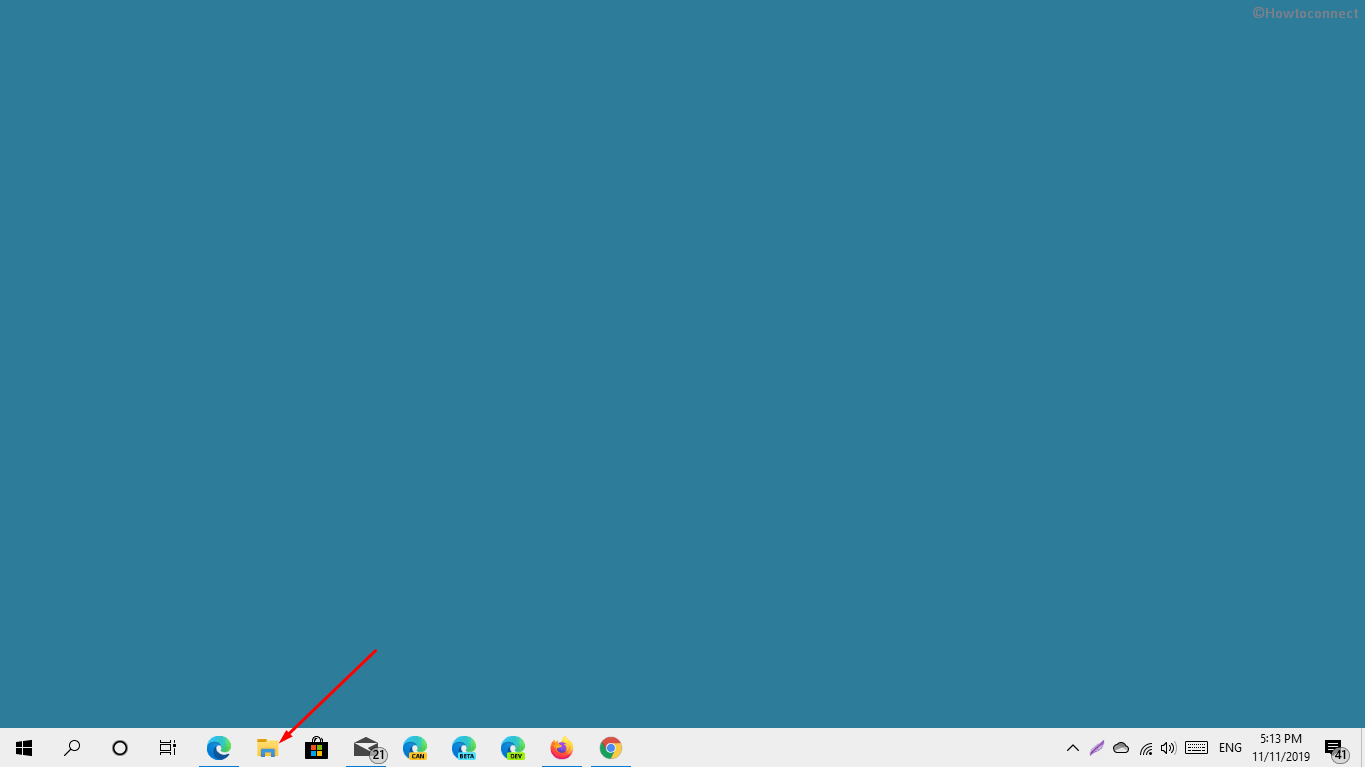
2] Use the keyboard shortcut Win+E
- Another quickest way to access File Explorer is to use the keyboard shortcut generated by Microsoft itself. All you need to do is pressing Win+E at one go.

3] Open File Explorer in Windows 10 through Quick access menu
In Power user menu, Microsoft places a File Explorer link so that users can quickly launch it whenever needed. For that –
- Press Win+X at once to invoke the Power user menu.
- Once it appears, click File Explorer to open it.
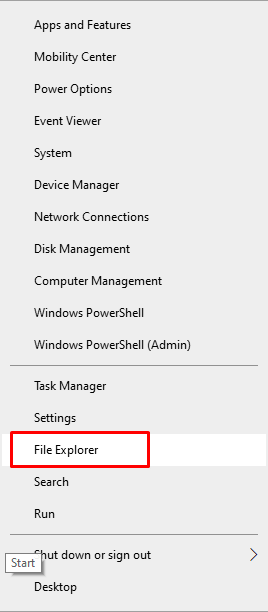
4] Try out the Start menu
- Do a click on the Start icon located at the bottom left corner of your desktop screen.
- Type explorer and you see the best match in the search result hit the Enter key.
5] Exploit dialog command to access File Explorer
- Open Run Dialog box using Win+R hotkeys.
- Upon appearing, write down explorer.exe in the void text bar and click the OK button.
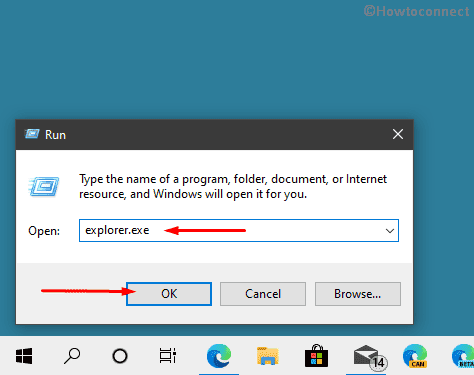
6] Open File Explorer in Windows 10 by means of Start menu
- To bring up the Start menu in the display, press the Windows key.
- Now, you need to navigate W alphabet. For that purpose.
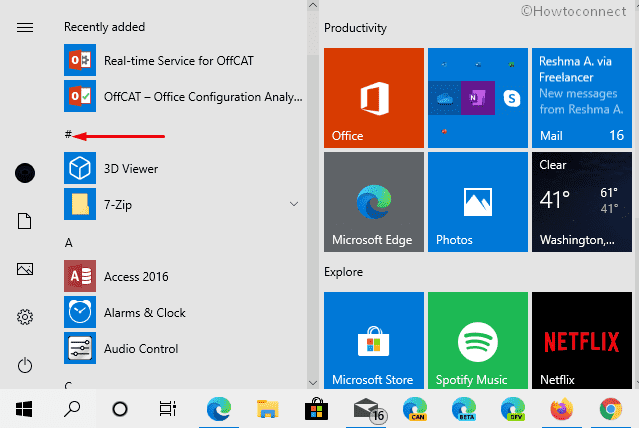
- Click # option located top of the interface and then select W from there.
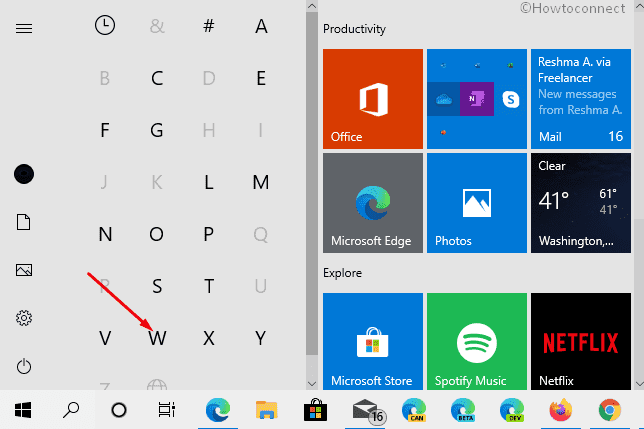
- Locate Windows System from the visible options and when found make a click on the arrow icon located beside it.
- From the expanded list, select File Explorer to open it.
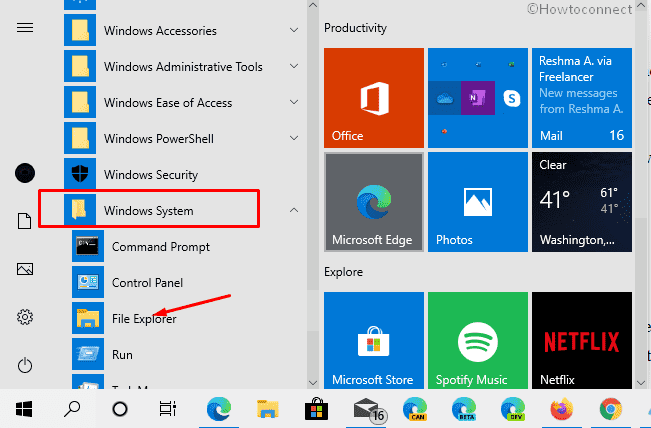
7] Bring Windows Search into the play
- Make a combined press of Win+S to view search in text mode.
- When it comes into the sight, type explorer.exe and hit the Enter key once the result shows up.

8] Open File Explorer in Windows 10 using Task Manager
- Hover the cursor to any void space of Taskbar eventually make a right-click on it.
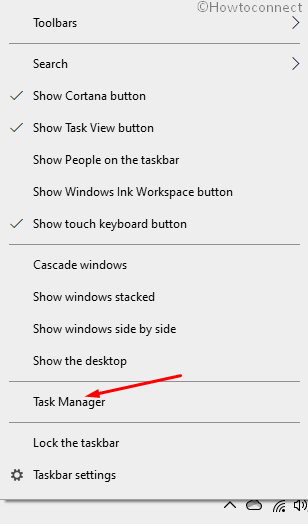
- Select Task Manager and then click on More details if the interface is not expanded already.
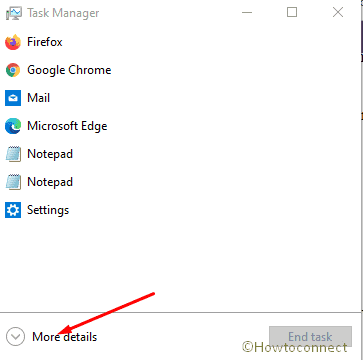
- Click the File option located in the Menu bar and select Run new task.

- A pop-up will come up, put explorer.exe in the provided field located next to Open and hit the OK button.
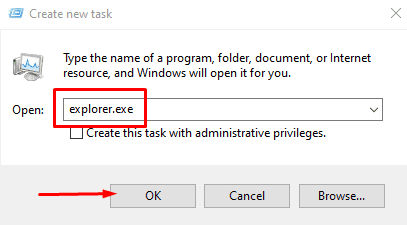
9] Via CMD.exe
- First of all, right-click on Start icon and select Run from the appearing items.
- Type cmd.exe and thereafter press Ctrl+Shift+Enter in one go.

- A UAC will come up for asking permission to run command prompt as admin, click the Yes button to grant it.
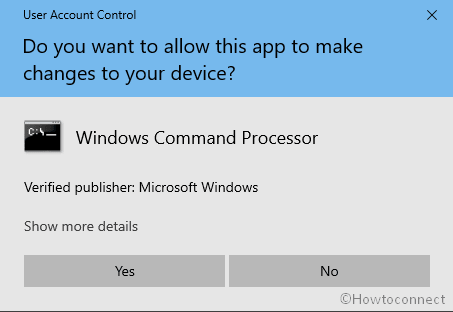
- Once the black window makes the appearance, type explorer.exe after the blinking cursor and hit Enter on your keyboard.
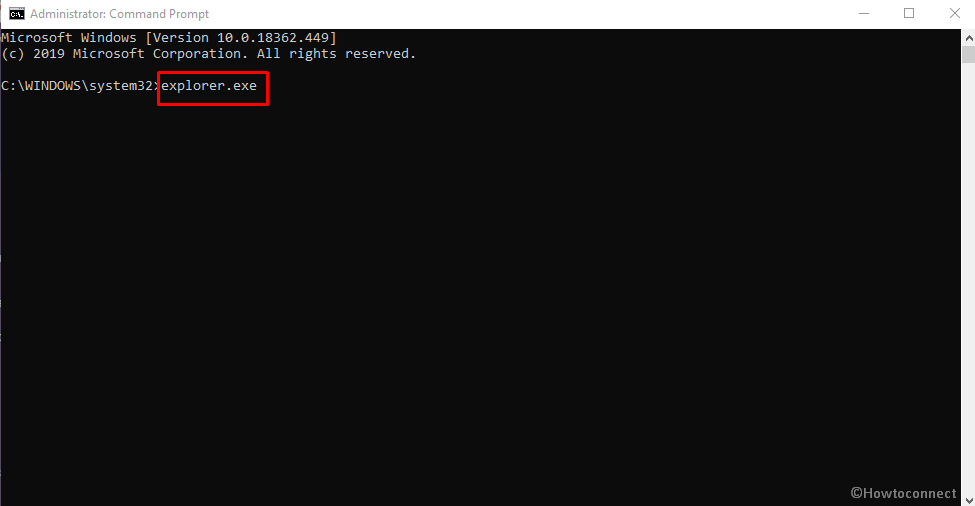
10] Open File Explorer in Windows 10 From Windows PowerShell
- Right click on Start and then select Windows PowerShell (Admin).
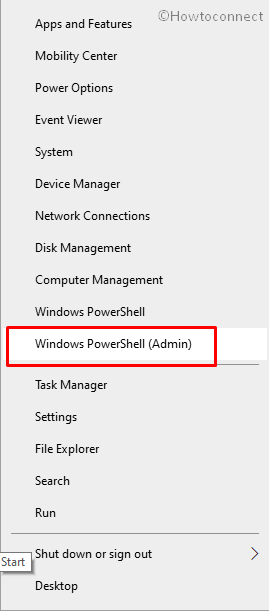
- If a UAC shows up, click Yes to continue.
- Next, you need to wait a few seconds so that the system can prepare PowerShell to use.
- Later on, type explorer.exe after the flicking PS C:\WINDOWS\system32> and hit Enter to access File Explorer.
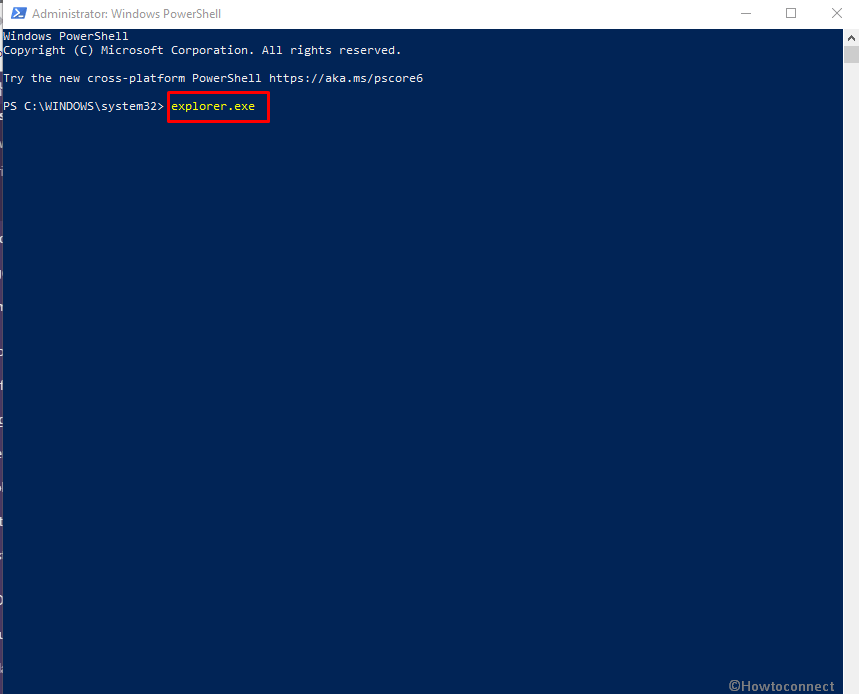
11] Prepare a desktop shortcut
To make a desktop shortcut of File Explorer, you need to launch Task Manager first. For this purpose, go to the Desktop screen and press Ctrl + Shift + Esc simultaneously.
- Once it turns up, move to its Details tab.
- Under the Name column, you will get all the services available in your system. Find out explore.exe from there.
- When you get it, right-click on the same and select Open file location.
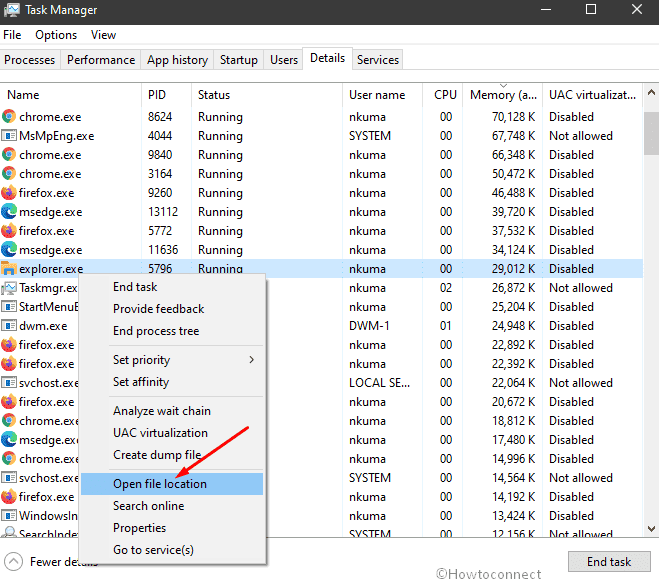
- A window will come into the view highlighting the explorer.exe option. Again right-click on it and select Send to >> Desktop (create shortcut).
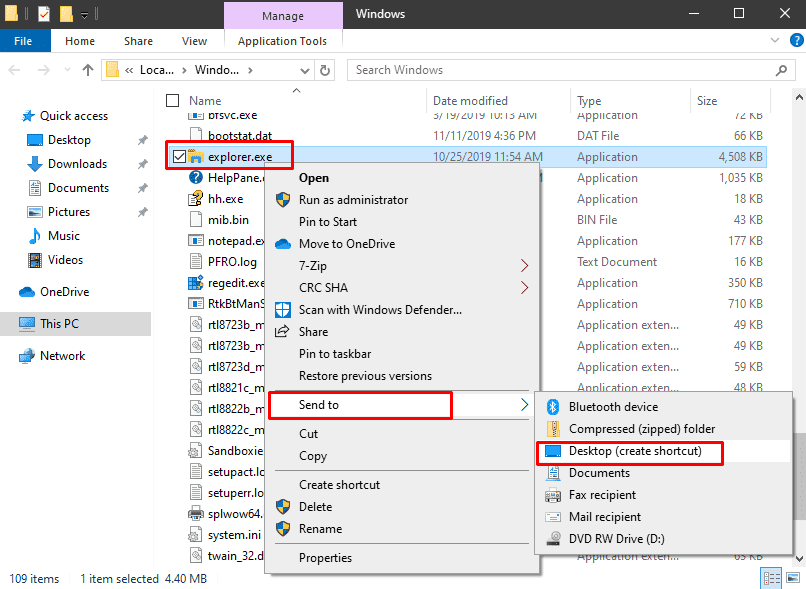
12] Make a hotkey to Open File Explorer in Windows 10
To generate a manual shortcut key for File Explorer, you just need to create a desktop shortcut first. Thereafter follow the below steps –
- Press Win+D to access Desktop screen.
- Right-click on the shortcut you created for File Explorer and select Properties.
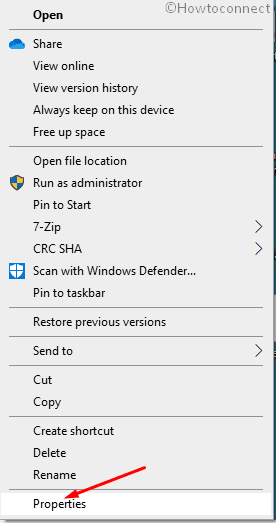
- When the Properties wizard shows up, you will be on the Shortcut tab by default. Take your mouse cursor to the Shortcut key section and click on the text bar situated beside it.
- The system has already set Ctrl+Alt as the prefix of the hotkeys. You just need to type any other letter to complete the keyboard shortcut.
- In the end, click the Apply button followed by pressing OK to save the changes.

Methods:
1] Access File Explorer with just one click
2] Use the keyboard shortcut
3] Through Quick access menu
4] Try out the Start menu
5] Exploit dialog command
6] By means of Start menu
7] Bring Windows Search into the play
8] Using Task Manager
9] Via CMD.exe
10] From Windows PowerShell
11] Prepare a desktop shortcut
12] Make a hotkey
That’s all!!
